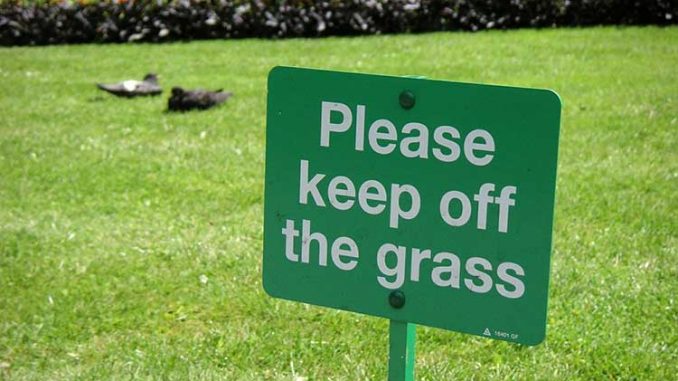Fertilizing your lawn is an essential step in maintaining its health and beauty. But after applying fertilizer, it’s crucial to give your grass time to absorb the nutrients and establish itself before resuming regular activities. Failure to do so can lead to several issues, including nutrient burn, root damage, and poor lawn health. This guide will provide you with a comprehensive understanding of how long to stay off the lawn after fertilizing, addressing factors such as fertilizer type, application rate, and weather conditions.

Image: landlawngarden.com
Understanding the Importance of Staying Off Your Fertilized Lawn
When you fertilize your lawn, you’re essentially feeding it a dose of nutrients that it needs for growth and development. These nutrients are typically in the form of nitrogen, phosphorus, and potassium (N-P-K), and they help the grass plants produce new blades, roots, and that lush green color we all desire.
Immediately after fertilizing, these nutrients are sitting on the surface of the lawn, where they can easily be washed away by rain or blown away by wind. If you walk or play on the lawn at this time, you can compact the soil, disrupt the nutrient absorption process, and even damage the grass blades.
How Long to Stay Off a Fertilized Lawn: The General Rule
As a general rule of thumb, you should avoid walking or playing on your fertilized lawn for at least 24 hours, or until the fertilizer has had a chance to be watered in and absorbed by the grass.
Watering your lawn after fertilizing helps to dissolve the fertilizer granules and move them into the soil, where they can be taken up by the grass roots. Waiting at least 24 hours ensures that the fertilizer has sufficient time to soak in and become less likely to be washed away by rain or blown away by wind.
Factors that May Affect the Waiting Period
While 24 hours is a good starting point, the amount of time you need to stay off your lawn after fertilizing can vary depending on several factors:
- Fertilizer type: Liquid fertilizers are absorbed more quickly than granular fertilizers, so you may be able to resume lawn activities sooner after applying a liquid fertilizer.
- Application rate: Heavier applications of fertilizer require more time to be absorbed, so you should wait longer to stay off your lawn after applying a heavy dose.
- Weather conditions: Rain or strong winds can wash away fertilizer or blow it away, so you may need to wait longer to stay off your lawn if there is inclement weather in the forecast.

Image: gardenhugs.com
What to Do After Fertilizing Your Lawn
Once you’ve applied fertilizer to your lawn, here are a few tips for ensuring that it’s absorbed properly and that your grass stays healthy:
- Water your lawn: Water the lawn thoroughly after fertilizing to dissolve the fertilizer granules and move them into the soil.
- Avoid walking or playing on the lawn: Stay off the lawn for at least 24 hours, or until the fertilizer has had a chance to be absorbed.
- Inspect your lawn: After waiting the appropriate amount of time, inspect your lawn for any signs of damage or nutrient burn. If you see any yellow or brown spots, it may be a sign that the fertilizer was applied too heavily or that it was not watered in properly.
How Long To Stay Off Lawn After Fertilizing
Conclusion
Following these guidelines for how long to stay off a fertilized lawn is essential for ensuring that your grass absorbs the nutrients it needs and remains healthy and vibrant. By giving your lawn the time it needs to recover after fertilizing, you can maximize the benefits of fertilization and keep your lawn looking its best.







